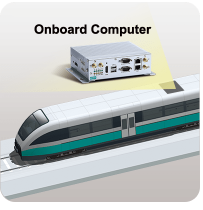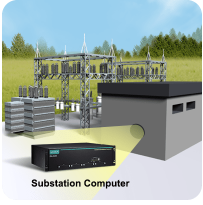According to some industry estimates, the IIoT could have a potential economic impact of $4 to $11 trillion [Source: Unlocking the potential of the Internet of Things] in the next 10 to 15 years. Business IIoT adoption surveys indicate that the adoption rate of the IIoT today is as high as 60%. Some industry experts estimate that by adopting predictive maintenance, companies can save 10 to 20% of the potential economic impact of the IIoT in the next 15 years.
Given the above statistics, the mammoth effort required to maintain the large numbers of equipment and devices that need to be maintained as a direct result of the widespread use of the IIoT is by no means an easy task, and calls for some extreme maintenance strategies and solutions to be put in place. Because the focus today is more on preventing unexpected and costly equipment failures before they occur, traditional maintenance methods, such as reactive or preventive maintenance, can no longer scale up to the increasing demands of modern industrial automation projects. This is a considerable shift from traditional maintenance strategies that involved taking action only when equipment failed, or repairing and replacing equipment at predefined intervals. In the current scenario, the only way forward for business operators is to re-evaluate their maintenance strategies and steer them towards predictive maintenance practices.
Predictive or condition-based maintenance consists of activities, systems, and tools collectively deployed with the main objective of preventing equipment failure using early-stage failure monitoring. This kind of strategy is expected to optimize production and reduce operational costs. The goal of a successful predictive maintenance program is to enable easy proactive access to data for each piece of critical equipment, so that businesses can monitor the current status of the equipment by watching the trends and planning maintenance downtime based on these values. Remote monitoring of equipment is another key aspect of maintenance systems. This is important because a significant amount of industrial equipment is deployed in hard-to-reach or remote areas. A prime example is computers deployed to monitor and control an unmanned substation.
Applying Predictive Maintenance to Industrial Computers
Industrial computers, which are an integral part of all IIoT systems, are used in critical roles such as data acquisition and for analyzing, monitoring, and controlling industrial processes. Any computer-related performance issue or failure has the potential to directly impact day-to-day business operations. A predictive maintenance tool for computers can help you monitor a computer’s health, giving you the ability to maximize system uptime by taking preventive maintenance measures well in advance of an actual failure. For example, computers used in rolling stock, marine, and substation applications are critical equipment that must be monitored along with other critical equipment, such as navigation equipment and substation transformers, so as to ensure smooth operations.
Rolling Stock

In a metro transit system, computers are widely deployed in onboard control and video recording systems. As space is very limited on refurbished rolling stock, computing systems are often installed at places that are hard to reach and maintain such as in cabinets, compartments under passengers’ seats, or on the ceiling. Having ready access to a computer’s current condition (storage, CPU, memory) so that you can implement a preventive maintenance routine is an important aspect of ensuring a smooth transit system.
Marine Bridge
.png)
Computers are used to run the electronic chart display and information system (ECDIS), which is one of the most important systems on a ship’s bridge. Such systems take real-time information from sensors deployed on equipment, such as speed logs, radar, wind stations, AIS, and gyrocompasses into consideration when planning the ship’s voyage. Hence, a reliable and durable computer is crucial for running the ECDIS system. Information on the status of the key parts of the ECDIS computer can be monitored by integrating the computer’s key-part data with the bridge system using monitoring APIs or by another means to achieve maximum system uptime.
Power Substation

Unmanned power stations are increasingly becoming the norm in remote, hard-to-reach sites. A predictive maintenance tool that can remotely monitor and control computers in an unmanned substation ensures that the substation functions smoothly.
To learn more about predictive maintenance in IIoT systems, download this white paper.
Moxa’s Solution
Moxa’s predictive maintenance solution, called Proactive Self-Maintenance, performs preventive maintenance measures to help businesses maximize system uptime by monitoring the health of computers deployed in their IIoT-enabled systems. Proactive Self-Maintenance is currently available on the V2201, V2403, MC-1100, MC-7200, and DA series of computers.